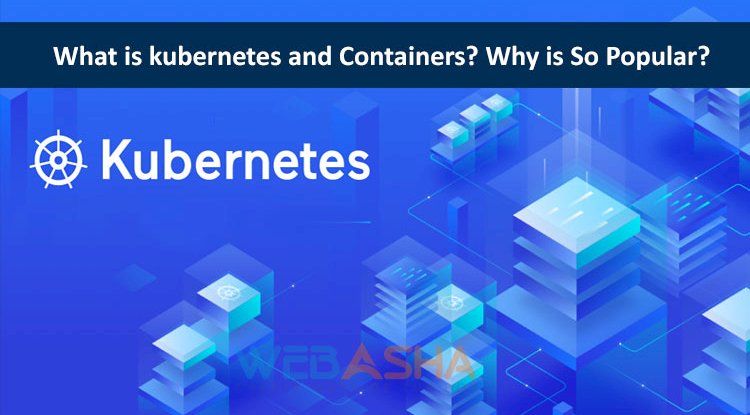AI vs. Traditional Penetration Testing | A Deep Dive into Pros, Cons, and Best Use Cases
With the rise of AI in cybersecurity, organizations must choose between AI-powered penetration testing and traditional manual testing to protect their networks. While traditional penetration testing relies on human expertise to detect business logic flaws and complex vulnerabilities, AI-driven testing automates reconnaissance, vulnerability detection, and security monitoring at an unprecedented speed. This blog explores the pros, cons, and real-world applications of both methods, highlighting where AI excels and where human-driven testing remains essential. Ultimately, the best cybersecurity approach combines AI automation with expert ethical hacking for a comprehensive security strategy.

Table of Contents
- Introduction
- What is Traditional Penetration Testing?
- What is AI-Powered Penetration Testing?
- AI vs. Traditional Penetration Testing: Feature Comparison
- Pros and Cons of AI-Powered vs. Traditional Penetration Testing
- Real-World Scenarios: AI vs. Traditional Penetration Testing
- Conclusion
- FAQ
Introduction
Cybersecurity is constantly evolving, with organizations adopting different methods to identify vulnerabilities before cybercriminals exploit them. Penetration testing (pen testing) is a crucial security practice that simulates real-world cyberattacks to test the resilience of systems. Traditionally, this process has been manual, relying on ethical hackers and red teams to identify weaknesses. However, with the rise of artificial intelligence (AI) in cybersecurity, penetration testing is becoming more automated, faster, and scalable.
This blog will compare AI-powered penetration testing vs. traditional penetration testing, discussing their benefits, limitations, and real-world applications.
What is Traditional Penetration Testing?
Traditional penetration testing is a manual security assessment performed by ethical hackers to evaluate a system’s defenses. The process includes:
- Reconnaissance – Gathering intelligence on the target network
- Scanning – Identifying open ports, services, and vulnerabilities
- Exploitation – Attempting to exploit security flaws
- Privilege Escalation – Gaining deeper system access
- Lateral Movement – Expanding control across the network
- Reporting & Remediation – Documenting findings and recommending security measures
Key Features of Traditional Penetration Testing
- Human Expertise – Ethical hackers rely on experience and intuition to find complex vulnerabilities
- Custom Attack Scenarios – Tailored approaches based on an organization’s unique infrastructure
- Deep Business Logic Testing – Identifying flaws that automated tools might miss
- Comprehensive Reports – Detailed analysis of security weaknesses and solutions
Challenges of Traditional Penetration Testing
- Time-Consuming – A full penetration test can take weeks to months
- Expensive – Requires skilled cybersecurity professionals
- Limited Scope – May not cover all attack vectors
- Periodic Testing – Conducted at scheduled intervals, not continuously
What is AI-Powered Penetration Testing?
AI-powered penetration testing automates vulnerability assessment using machine learning, deep learning, and data analytics. AI-driven tools analyze large datasets, detect attack patterns, simulate exploits, and adapt to evolving threats in real time.
Key Features of AI-Powered Penetration Testing
- Automated Reconnaissance – AI collects and analyzes vast amounts of security data
- Predictive Vulnerability Analysis – AI anticipates potential weaknesses based on previous attack patterns
- Real-Time Adaptation – AI modifies its approach based on system responses
- Scalability – Capable of testing large networks and cloud environments
- Continuous Security Monitoring – AI can run 24/7 security tests without human intervention
Challenges of AI-Powered Penetration Testing
- Limited Human Intuition – AI cannot replicate the creativity of human hackers
- False Positives – AI may incorrectly flag harmless configurations as threats
- Potential for Cybercriminal Use – Hackers can also use AI to automate attacks
- Lack of Context Awareness – AI may struggle with business logic vulnerabilities
AI vs. Traditional Penetration Testing: Feature Comparison
| Feature | Traditional Pen Testing | AI-Powered Pen Testing |
|---|---|---|
| Speed | Slow, manual process | Fast, automated process |
| Accuracy | High, based on expertise | Medium, risk of false positives |
| Scalability | Limited | High, ideal for large networks |
| Creativity & Adaptability | High, relies on intuition | Limited, based on pre-set algorithms |
| Continuous Testing | No, periodic assessments | Yes, operates 24/7 |
| Cost | Expensive, requires human expertise | More affordable, reduces manual effort |
| Zero-Day Vulnerability Detection | Possible but time-consuming | Limited, depends on training data |
| Customization | High, based on specific threats | Limited, pre-programmed scenarios |
| Business Logic Flaw Detection | Yes, human experts analyze processes | No, lacks deep contextual understanding |
Pros and Cons of AI-Powered vs. Traditional Penetration Testing
Pros of AI-Powered Penetration Testing
- Speed & Automation – Can analyze and test systems in minutes
- Scalability – Tests multiple applications, networks, and cloud services
- Continuous Monitoring – Provides 24/7 threat detection
- Cost-Effective – Reduces dependency on human testers
- Pattern Recognition – Detects security trends and potential threats automatically
Cons of AI-Powered Penetration Testing
- Lack of Human Intelligence – Cannot think like a real hacker
- False Positives – May flag non-issues as security risks
- Bias in Training Data – Limited by the data sets used for training
- Not Suitable for Business Logic Testing – Struggles to analyze application-specific vulnerabilities
Pros of Traditional Penetration Testing
- Human Intuition – Ethical hackers can think creatively to bypass defenses
- Custom Attack Simulations – Red teams create realistic attack scenarios
- Better Business Logic Testing – Identifies application-specific flaws
- Comprehensive Risk Analysis – Reports include detailed remediation plans
Cons of Traditional Penetration Testing
- Time-Consuming – Can take weeks or months to complete
- Expensive – Skilled professionals are costly to hire
- Limited in Scope – Humans may overlook certain vulnerabilities
- Not Continuous – Conducted at specific intervals, leaving gaps between tests
Real-World Scenarios: AI vs. Traditional Penetration Testing
Scenario 1: Automated Cloud Security Testing
A large financial institution wants to continuously test its AWS cloud infrastructure for misconfigurations, unpatched vulnerabilities, and access control issues. AI-powered penetration testing automates vulnerability assessments, providing real-time alerts and remediation recommendations.
Best Choice: AI-Powered Penetration Testing
Scenario 2: Simulating a Targeted Cyberattack on a Bank
A red team is hired to mimic an advanced persistent threat (APT) attack against a bank, using custom attack vectors to bypass multi-factor authentication (MFA) and infiltrate critical financial systems.
Best Choice: Traditional Penetration Testing
Scenario 3: Identifying Business Logic Vulnerabilities in a Web App
An e-commerce company needs to test for flaws in its payment gateway logic, which could allow users to manipulate discounts or bypass transaction security.
Best Choice: Traditional Penetration Testing
Scenario 4: Large-Scale Network Security Testing for an Enterprise
A multinational corporation with thousands of endpoints, cloud servers, and remote employees needs scalable security testing to ensure its infrastructure is secure. AI-powered penetration testing provides rapid vulnerability detection across the entire network.
Best Choice: AI-Powered Penetration Testing
Conclusion
Both AI-powered and traditional penetration testing have their advantages and limitations. AI enhances speed, scalability, and automation, making it ideal for large-scale, real-time security testing. However, traditional penetration testing remains crucial for business logic flaws, targeted cyberattack simulations, and human-driven threat assessments.
Organizations should adopt a hybrid approach, combining AI-driven automation with human expertise, to maximize security coverage and stay ahead of emerging cyber threats.
FAQs
What is penetration testing in cybersecurity?
Penetration testing is a simulated cyberattack that helps identify vulnerabilities in an organization's security systems before real attackers can exploit them.
How does AI-powered penetration testing work?
AI-driven penetration testing uses machine learning and automation to identify security flaws, analyze attack patterns, and generate reports without human intervention.
What are the key differences between AI and traditional penetration testing?
AI testing is faster, scalable, and automated, while traditional testing relies on human intuition, creativity, and deep security knowledge.
Is AI penetration testing more accurate than manual testing?
AI can detect vulnerabilities quickly, but it may produce false positives. Manual testing is more precise but slower.
Can AI replace human penetration testers?
No. AI enhances penetration testing but lacks human intuition and the ability to detect business logic vulnerabilities.
What are the advantages of AI-driven penetration testing?
- Speed – AI can test large networks in minutes
- Scalability – Works across cloud, IoT, and enterprise networks
- Continuous Testing – AI can monitor security 24/7
What are the disadvantages of AI penetration testing?
- False Positives – AI may flag harmless activities as threats
- Limited Creativity – AI cannot think like a real hacker
- Bias in Training Data – AI is only as good as the data it’s trained on
Why do organizations still use manual penetration testing?
Human testers can simulate real-world cyberattacks, bypass AI’s limitations, and analyze business logic flaws in applications.
How does AI help in reconnaissance?
AI scans open-source intelligence (OSINT), databases, and network traffic to gather intelligence before an attack.
Can AI detect zero-day vulnerabilities?
AI can predict potential zero-day threats but cannot discover them with certainty like human researchers.
What role does AI play in red teaming?
AI assists red teams in automating reconnaissance, social engineering, and exploit development.
Is AI better for large-scale security testing?
Yes. AI can efficiently scan thousands of endpoints across cloud environments and corporate networks.
What are the risks of relying too much on AI in penetration testing?
Over-reliance on AI can lead to missed complex vulnerabilities, false positives, and security blind spots.
How does AI handle social engineering attacks?
AI can generate phishing emails, deepfake voices, and impersonation scripts to test an organization’s human security weaknesses.
What industries benefit most from AI penetration testing?
Finance, healthcare, government, and large enterprises benefit from AI-driven security due to their vast digital infrastructure.
Can AI be used in bug bounty programs?
Yes. AI helps automate vulnerability scanning for bug bounty hunters, making their research faster.
What are the cost differences between AI and manual penetration testing?
AI penetration testing is cheaper long-term but may require initial investment in AI tools. Manual testing is expensive but highly accurate.
How does AI improve vulnerability management?
AI analyzes past attacks, learns from them, and prioritizes vulnerabilities based on risk levels.
Can cybercriminals use AI for penetration testing?
Yes. Hackers use AI to automate attacks, create self-learning malware, and exploit vulnerabilities faster than humans.
What tools are used for AI penetration testing?
Popular AI-driven penetration testing tools include Pentera, Astra Security, and AI-enhanced Metasploit.
Does AI penetration testing require human oversight?
Yes. Security experts must review AI-generated reports to validate threats and reduce false positives.
How does AI improve phishing attack simulations?
AI mimics realistic phishing emails and messages, adapting to an organization's internal communication style.
What is the future of AI in penetration testing?
AI will become more advanced in self-learning attack simulations, AI-vs-AI cybersecurity battles, and autonomous red teaming.
Can AI help prevent ransomware attacks?
Yes. AI detects unusual file encryption behaviors and can block ransomware before it spreads.
What are the ethical concerns of AI penetration testing?
AI tools, if misused, could be weaponized by cybercriminals, leading to large-scale automated cyberattacks.
Should small businesses use AI penetration testing?
Yes. AI-driven security is cost-effective and scalable, making it accessible for smaller businesses with limited resources.
Can AI test APIs for security vulnerabilities?
Yes. AI can analyze API traffic, detect injection attacks, and find security misconfigurations.
What role does AI play in cloud security testing?
AI helps scan cloud environments, detect misconfigured permissions, and identify data leaks.
How does AI contribute to real-time security monitoring?
AI continuously scans network traffic, logs, and system activities to detect threats instantly.
Should companies combine AI and manual penetration testing?
Yes. A hybrid approach combining AI automation with human expertise offers the best cybersecurity defense.














![Top 10 Ethical Hackers in the World [2025]](https://www.webasha.com/blog/uploads/images/202408/image_100x75_66c2f983c207b.webp)








